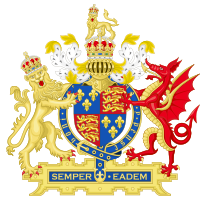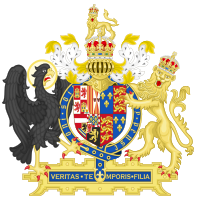In the Netherlands the King uses the Royal Arms as King but it is never his personal Arms. Wilhelmina, Juliana and Beatrix returned to their personal Arms after abdication. The King uses the national arms alike Macron uses the Arms of France or Biden uses the Arms of the United States during office.
Insteresting. So are you saying the King's personal arms still are the ones he was given when he was born, but, while he is King, he merely uses the national arms instead?
Is that the same as or different from the situation in Sweden, see my comments below? I think it might be different because Law 1982:268 in Sweden specifically mentions
statschefens personliga vapen , i.e.
personal arms of the Head of State.

Recalling from memory, I think the national coat of arms is identical to the monarch's personal arms in Denmark, but not in Norway or Belgium, but I could be wrong.
It is a little bit confusing to me. Denmark apparently has a Greater Coat of Arms, which is the royal coat of arms (
kongevåben ?) and a Lesser Coat of Arms, which is the state coat of arms (
rigsvåben). The former is used only by the Queen, members of the Royal Family (with modifications), and, I suppose, departments of the Royal Household.
Sweden also has a Greater Coat of Arms and a lesser variant, and both are legally considered state (or national) arms (
riksvapen). The Greater Coat of Arms is also the personal arms of the King
as Head of State and the King may also authorize its use by "members of the Royal House" (
det kungliga huset, whatever that means in Sweden) with such modifications as the King may determine. Although only the Lesser Coat of Arms is normally used by other state bodies, from what I understand, unlike in Denmark, the Greater Coat of Arms may also be used by "the Riksdag, the government, the ministries, the foreign service and the Armed Forces" in addition to the Head of State.
In Belgium, I am pretty sure that the King's arms, at least since 2019, are different from the national arms, both in the greater and lesser variants. The King's personal arms for example include the Saxonian inescutcheon, which is not present in the national coat of arms.
Likewise, in Spain, there are many differences between the national arms and King Felipe's personal arms. The King's arms include the collar of the Order of the Golden Fleece, a different color for the Lion Rampant in the second quarter, a different design of the royal crown, and different designs also for the castle and the chains in the first and fourth quarters. Also, the King's arms have no supporters while the national coat of arms (
escudo de España) is supported by two crowned columns wrapped with ribbons featuring the words "Plus" and "Ultra" ("Plus Ultra" being the motto of Spain). King Juan Carlos' coat of arms, which can be still legally used by the King Emeritus, uses alternatively the Burgundy cross as supporter and has a distinctive red Lion Rampant (as opposed to the purple Lion Rampant in King Felipe's shield) plus the yoke and arrows used in the arms of the Catholic Kings, which are now also gone from King Felipe's arms.
I guess one could argue that the different colorings and designs of some common elements are simply due to different heraldic interpretations of the description of the achievements, but the presence of different elements (like the Golden Fleece on the King's arms, and the supporters and national motto on the state arms) suggests to me that those are indeed two different coat of arms, but I would appreciate if the heraldic experts here could comment.
Finally, my understanding is that, in the United Kingdom in particular, in line with the (correct) heraldic tradition for a monarchy, there is no such thing as national or state arms. There is only the Arms of HM The Queen in Right of The Crown and the Queen incidentally uses different arms in Scotland (as HM The Queen in Right of Scotland) and in Canada (as HM The Queen in Right of Canada; Canada also lacking in this case national/state arms). Because the government is technically the Queen's government (as the Queen holds the Executive power), the Armed Forces are the Queen's Armed Forces, and the Courts administer justice in the Queen's name, they also use the Queen's arms or, in fact, in the case of the government, normally a simplified version thereof (without crests, helms or compartments for example), but I don't think they are technically different arms. Again, I would like to hear the experts' opinion.






